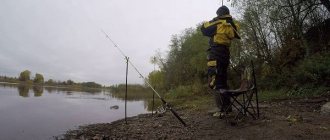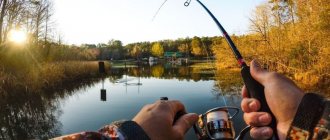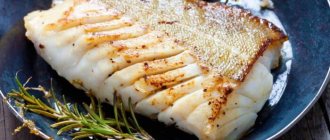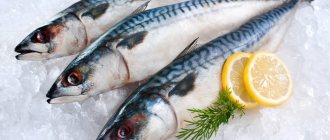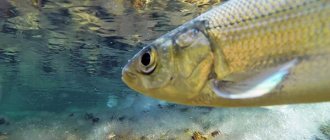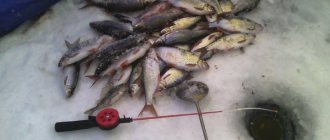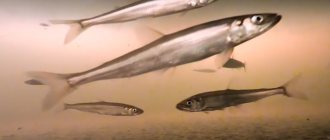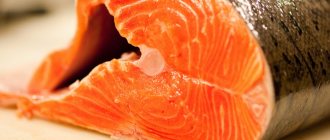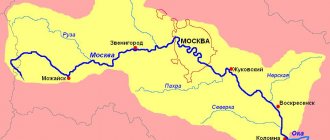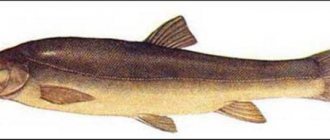Now the Oka is home to about thirty species of fish. Of the representatives of the sturgeon family (Acipenseridae), only the sterlet (Acipenser ruthenus) remains. This fish is quite rare. Pollution of water bodies, large-scale hydro-mechanized works in the riverbed, and predatory fishing (in the past) have brought this species to the brink of extinction. The favorite places of sterlet are deep sections of the river with a hard bottom. The sterlet feeds on bottom hydrobionts (mayfly larvae, bivalves, worms, etc.), the most numerous in the ichthyofauna of the Oka, the carp family (Cyprinidae). The main fish stock of the Oka consists of bream (Abramis brama), roach (Rutilus rutilus) and silver bream (Blicca bjoerkna). These species account for more than two-thirds of the total fish biomass. They are the main prey of a large army of amateur fishermen. Until recently (late sixties), the basis of fishermen's catches was Podust (Chondrostoma nasus).
large schooling fish were found in such abundance in the Oka and its tributaries that they could be caught by hand (in shallow bays). The peculiarity of this fish was not only their number, but also the unusual position and structure of the mouth for carp: under the snout, in the form of a slit with a sharp lower lip. Now podust in the river is as rare as sterlet. The reasons for the decline in its numbers have not been fully elucidated, because the heyday of this species occurred during the period of severe pollution of the waters of the Oka basin (50-60s) when there were almost no treatment facilities yet, and industry was intensively developing, dumping tons of pollutants into water bodies.
All these species are rheophiles, i.e. prefer fast currents and spawn on rocky rifts. The blow to them was apparently dealt not so much by pollution as by the destruction of spawning and habitat areas.
In addition to the listed cyprinids, the Oka is home to: asp (Aspius aspius) - the only purely predatory species of the cyprinid family in the Oka, white-eye (Abramis sapa), golden and silver crucian carp (Carassius carassius and carassius auratus gibelio), tench (Tinca tinca), bitterling ( Rhodeus sericeus), saberfish (Pelecus cultratus), rudd (Scardinius erytrophtalmus), bleak (Alburnus albyrnus).
The perch family (Percidae) is represented in the Oka by four species: perch (Perca fluviatilis), pike perch (Lucioperca lucioperca), bersh (Lucioperca volgensis) and ruff (Acerina cernua). It should be noted that bursh as an Oka fish is not mentioned anywhere in the literature, but it exists in the Oka, at least in recent years it has been found, and it is unknown how it got here. But the ruff, which used to climb onto fishermen’s hooks without allowing other fish to approach them, has almost disappeared, and the one that remains has been shredded by its body and is in no hurry to catch the fishhook. Pike (Esocidae), as in other Russian reservoirs, are represented by one species - pike (Esox lucius). The Oka pike is characterized by a light coloration and a shortened and thickened body.
The families of cod (Qadidae) and catfish (Siluridae) are represented, respectively, by burbot (Lota lota) and catfish (Silurus glanis). As a rule, these fish do not grow large in the Oka: the water is too warm for burbot, and cold for catfish. In the bays and oxbows of the river, abundantly overgrown with aquatic vegetation, representatives of the loach family (Coditidae) live: loach (Misgurnus fossilis), spined loach (Cobitis taenia) and loach (noemacheilus barbatulus). And on the rocky shores, sculpin (Cottus gobio), a representative of the sculpin goby family (Cottidae), hides under the stones.
The entire ichthyofauna of the river is like the top of a large and complex pyramid, otherwise called the ecosystem of the reservoir. All levels of this pyramid, starting from bacteria and protozoa, including large and small algae, as well as everything that moves and crawls in them, or even floats freely in the water column, all eating each other and decreasing in body but increasing in size as they move to the top, all this is a system of biological self-purification of the reservoir. The system of biological self-purification of a reservoir (SBSP) is a powerful organism capable of producing significant biomass and overcoming ailments.
However, like any organism, it has limits to its capabilities. The first signs of malaise in this organism are a decrease in its biomass and, first of all, in the most highly organized part. A decrease in the number of species living in a reservoir or a decrease in their abundance is evidence that the limit of the capabilities of the SBWS has been reached; urgent treatment is required, i.e. creating a normal healthy climate for the existence of the ecosystem. Example p. Oki is a particular example of a single ecosystem, but it is typical for all of Russia, and not only Russia.
https://www.fishing-r...n-ryba-oki.html (26-03-2010, 12:39)
V.I.Shavkin
riverhunters.ru
24-10-2016
What kind of fish is found in the Oka River?
- There are a lot of all kinds of fish in the Oka. Pike, pike perch, roach, rudd, asp, sabrefish, burbot, ruffe, bream, bream, perch, podust, catfish, chub, bleak, silver bream, gudgeon, ide, carp. Sometimes a sterlet is caught, but according to the rules it must be released. Maybe I forgot to name some fish.
- There are quite a lot of species of fish living in the waters of the Oka River. There are more than 20 breeds characteristic of the Volga River and other large rivers in the central zone of the country.
The most common species caught on a hook or in a net are bream, roach, chub, ide, silver bream, perch, catfish, podust, pike, gudgeon, and ruffe. There are pike perch, tench, asp, crucian carp, burbot, carp and even trout.
The number of sturgeon has recently increased, which is associated with the work of fish factories that primarily raise sterlet fry and then release the juvenile fish into free swimming.
But in our country there is also the Oka River in the Irkutsk region, which is also called the Oka Sayanskaya. There you can catch typical fish species for Siberian rivers - grayling and lenok, taimen and trout.
- There are at least two fish in the Oka River - BIG and SMALL! You can get more extensive information about the list of fish living in the Oka River in two ways:
- theoretical method - studying special literature on this issue,
- practical way - choose a good day, take your loved ones and go FISHING!
- The Oka River is rich in fish diversity.
Most often you can find here bream and roach, silver bream and white bream, pike and crucian carp, small fish like ruffe and gudgeon. There are catfish and pike perch, asp and chub, redfish and bluegill, perch and ide.
Fishermen are rarely able to catch white fish and sturgeon; sterlet is bred, so it is more common.
The river is not regulated by man, the fish in it are well-fed and anyone who is interested in fishing will not be left without a catch. Although the abundance of food makes the fish timid and it is believed that it is better to fish from the shore, do not frighten them with a boat. The season begins in the spring at the mouths of small rivers flowing into the Oka, where the water warms up faster and there is more food.
- Thanks I'll know. I'm just going to Oka in the summer.
- The Oka River, unlike the Oka car, is quite large. The largest of the right tributaries of the Volga. And there is a wide variety of fish there, from common perch to noble sterlet. There are bream, roach, and asp. Catfish, pike, carp... for every taste.
- Hello!!!!!!! The question, of course, seems very broad, there are all sorts of fish there, the question is what fish are you interested in in this river, well, if it’s a big one, I think many people are interested in just such a fish, then I’ll say this, there are a lot of carp like carp, carp, crucian carp, silver carp, grass carp, etc., there are predatory fish, many species, and very large ones are catfish and similar currents, smaller ones are burbot, but there are a lot of little things everywhere, if you are interested in a specific designated fish, I’ll wait for a question about it, I’ll tell you...
- The river, called Oka, is the largest and most abundant right tributary of the huge Volga. The Oka is home to almost all the varieties of fish that live in the Volga basin. As for the most common ones, they include the following: perch, roach, pike perch, bream, ruff.
- The most common types of fish on the Oka River are:
- roach,
bream,
- pike,
- som,
- perch.
To study the diversity of fish inhabiting the Oka River, it is preferable to choose the second method.
PS If you organize training in the fresh air, the consolidation of the studied material will be faster and better. When you clean a fish, you remember its name well, and when you try fish soup, you want to know even more. Good luck!
In addition to these species, you can also find silver bream, burbot, chub, white-eye, ide and asp. Usually the largest fish specimens are bream.
Therefore, feel free to go fishing, a varied catch will be waiting for you.
But I would like to draw your attention to the Royal fish, and specifically to the sterlet.
In recent years, there has been a noticeable increase in this noble fish in the Oka River; sterlet began to be caught much more often on various fishing gear, which indicates an increase in its numbers. This happens thanks to the great work done by people who care about the Oka biological resource.
I would especially like to mention the Aleksinsky chemical plant, on the basis of which the best fish workshop in Russia was created in 1994. It contains a whole collection of the rarest sturgeon species, these are beluga, Russian sturgeon, stellate sturgeon, the rare Aral thorn, and of course sterlet. In this artel, over a million fry are grown annually, which are regularly released both into the Oka and into other rivers of our native country.
Download PDF What kind of fish is found in the Oka River?
woprosi.ru
The surroundings of Kaluga on the Oka, as well as its tributaries, are traditionally famous as places of successful and rich fishing. There are over 30 species of fish in river waters; the most common are pike perch, bream, pike, ide, roach, and perch with gudgeon. There are also plenty of protected places where you can set up camp and spend the night without fear of neighbors and competition. There are also a dozen reservoirs, the largest of which are Lyudinovskoye, Brynskoye, Milyatinskoye and Kirovskoye-Verkhnee, which have earned themselves a good fishing reputation. Spinning anglers almost everywhere will be pleased with the abundance of pike, which in modern times bites closer and closer to the shore. There are also many large pools on the river where pike perch stand, and large catfish are found in the dumps. In the sandy shallow waters of a reddish hue, in the fall there is a massive release of fish - first peaceful, and then predatory. By the way, this is a suitable place for winter fishing. Whitefish are caught well in the region all season long. Starting from April, these are bleak and dace, and in May roach, roach, silver bream and rudd become more active. During spring, hungry fish go well with bait of animal origin: bloodworms, maggots and dung worms. Closer to summer, it begins to react to plant bait. And yet the most popular fishing on the Oka in the Kaluga region is on the rifts. The prey is perch and chub, and heavy specimens are not uncommon. And individuals weighing up to a kilogram, one might say, are guaranteed.
They usually wade, using small wobblers up to 5-6 centimeters, which have proven themselves worthily in the current. Fans of fly fishing and floaters who use bottom bait followed by retrieving will not be left without prey. And the best time of the season remains May and June - the time of departure of the most popular (for fish) bait - the cockchafer. It is good to drag such a bait along the top of the water, making a long cast of the float - your hook will not return empty. A number of fishing and tourist bases are ready to offer their paid services to supporters of civilized fishing on the Oka River in the Kaluga region. Their range is quite wide: from a prepared trip to the shore and a pre-fed fishing spot to houses and equipment. Do not forget that the updated Fishing Rules in the region prohibited the fishing of such types of fish as saberfish, lamprey, mustard and sterlet. It should be noted that these wonders were already extremely rare even for the most experienced fishermen. But the slightly more common bystryanka, carp and minnow, Don ruff and Dnieper barbel disappeared from the new list.
www.fishpro.org
The most fishing spots on the Oka
It is difficult to recognize the Oka, the largest river in the Moscow region, today. Today's busy shores and beaches looked completely different just a few years ago: nature untouched by human hands, an abundance of fish in the water surface.
Today the Oka is crossed by boats, water scooters, boats and catamarans. You will no longer find such a large number of fish as before, but there are still places for lovers of true fishing, where you can catch a very cunning predator.
Infrastructure and industrial development have also negatively impacted the viability of the river. Therefore, when going fishing in the spring, at the beginning of May, arm yourself only with a float rod.
An excellent catch will guarantee successful fishing. Therefore, it’s not worth throwing the fishing rod anyhow, throwing the tackle every time, it’s better to look around and choose the most suitable place with an accurate eye.
It should be said that although the availability of the best places for fishing on the Oka is not great, it still exists and changes depending on the time of year, as well as weather conditions. These factors are worth keeping an eye on.
The most visited areas of Oka are:
- Serpukhov;
- confluence of the Lopasny River;
- Malyushina Dacha;
- Kashiry;
- Ozery;
- Kolomna.
Fishing on the Oka
The river is considered an excellent place for fishing, where dozens of fish hunters come. Its waters are inhabited by perch, pike, pike perch, carp and chebak. In the early 90s, sturgeon, beluga and white fish were found here. But the flow of harmful emissions into the Oka led to their extinction.
Fishing begins in the spring, when the fish are actively biting. The Protva tributary, flowing along the villages of Skniga and Serpukhov, is rich in pike perch and perch. And on the outskirts of the Lake they catch a lot of asp and bream. Quite abundant catches are observed in the Lopasney area. The city of Kashira also has many hot spots where fishermen gather at the end of the season.
For successful fishing you need to prepare a heavy spoon and spinning rod. It is important to choose a good place, as the position of the sandbars may change due to strong currents. Beloomut is home to pike and catfish, but in autumn the bottom here becomes clayey and covered with deep holes.
Usually fishermen can be seen near Ozery, Malyushina Dacha and Kolomna. The characteristics of these cities have spread throughout Russia; fishing enthusiasts come here every year. Most of them drew up their own plans and descriptions of the creeks where there were a lot of fish.
When is the best time to fish?
Anyone who has been fishing for a long time knows that it is best to consider the time of the most successful fishing by season.
So spring on the Oka marks a general rise, during which the activity of fish that have just woken up after winter hibernation goes through the roof.
And it's not just like that:
- some species of fish tend to spawn in smaller rivers and tributaries of the Oka;
- Some types of fish are actively looking for food, starving after hibernation.
And how can you refuse such skillful fishing when the fish itself comes into your hands?
If you decide to go fishing on the Oka River or any of its tributaries, prepare for the fact that the catch will be rich in large fish, for example, roach, bream, and silver bream.
If spring is rich in precipitation, and river floods exceed the norm, it is quite possible to hook a podust.
The most successful place for fishing, promising a rich catch in the spring, will, of course, be the bottom layer that smoothly reaches the shallows and areas with reverse water flow - the fish always strives to find food floating in the stream.
In the hot summer, there is almost no active biting, it subsides. After the end of spawning, the fish return to their usual places of residence and behave more quietly.
When fishing on the Oka from a boat or deep-sea fishing, be prepared to catch a real trophy fish. The further you get towards the middle of summer, the clearer the water, and accordingly the fish are more timid, since everything is visible through the transparent water surface.
At this time of year, coastal fishing is ineffective. Long casts and wading fishing are ideal options that promise at least some catch.
Autumn is characterized by activity among predatory fish. The pike bite begins at the end of August.
Quite a decent specimen can be caught overnight. In anticipation of the cold, pike perch begins to behave more actively.
When choosing a good place for fishing, you should pay attention to:
- Preference should be given to fishing areas with a smooth river flow;
- the bottom should be more or less flat, strewn with pebbles or at least without namul;
- water depth is approximately 3-3.5 m;
- it costs about 15-30 meters to move away from the shore;
- The “fish trail” guarantees a constant bite.
Winter fishing, in general, differs only in covering the surface of the river with an ice crust and following the general rules:
- You should only fish in holes;
- use animal bait;
- As for the gear, the fishing line should be thinner;
- Don't forget to keep warm. Stock up on a thermos with hot tea or coffee.
Where to stay?
If we talk about infrastructure near the river, then most often fishermen travel with their portable means of living - tents.
There are several special tourist bases and VIP class fishing grounds where you can stop and fish in comfort.
Speaking about the best places to stop to fish with “consequences”, that is, an excellent catch, you should choose:
- Fishing places near the city of Kashira.
The area is characterized by rocky rifts and sand pits.
In the area of the old bridge live in large flocks:
- pike;
- zander;
- perch.
Near the quarry you can catch the same fish, and also asp. This is where you have a great chance of catching large-sized burbot or catfish.
- Fishing places in close proximity to the city of Kolomna.
The area near Kolomna is ideal for bream fishing enthusiasts. The largest bream are found near Kolychev. Both ide and pike perch are easy to catch here.
Moving further towards the Moscow River, you can trace a certain unpleasant feature - the entire reservoir is shrouded in poacher’s nets, so fishing here will not be possible normally, and there is no question of sport fishing at all.
- Fishing places near Serpukhov.
Serpukhov is an ideal place for fishing. Here you can fish for any inhabitant of the Oka River, from pike perch to catfish. When you stop for fishing on a spit or rift, you may be lucky enough to catch a bream or chub.
Shipping
Local passenger shipping on the Moskvich motor ships within the city reservoir of the city of Orel. Over the decades, the border of “regular navigation” on the Oka has gradually “moved” downstream. In the 1960-70s it was located near the village of Mashkovichi (1170 km). Currently, formally regular shipping in accordance with the “List of Waterways” begins from the city of Kaluga, transit - from Kolomna (that is, from the mouth of the Moscow River). Below the confluence of the Moscow River there is a lock for 100 km. Hydroelectric dams: Beloomutsky, old Kuzminsky (includes micro hydroelectric power station) and new Kuzminsky.
Paid or free fishing?
Naturally, like on any other river, lake or reservoir, you can fish on the Oka both for a fee and for free. A free way of fishing without excess comfort is described in simple words as camping accommodation.
If you have your own tent and gear, free fishing is your option. Of course, thanks to the development of infrastructure, this is not so simple.
Every day, an increasing number of fishermen prefer paid areas of fishing bases and grounds, where you can go fishing in an absolutely concomitant environment, the only negative is the payment. But no one will scare away your prey.
So you can stay either in a comfortable cottage but for a decent sum, or in your own tent.
There is also a budget option for visiting fishermen or those who do not have their own equipment - a camping complex that offers accommodation at a low price.
Additional features
Additional fishing opportunities on the Oka include the services of many travel companies, which today have switched to interesting offers available to everyone.
Since rural tourism is leading today, relaxation in a quiet area by the river and also doing your favorite pastime is so popular.
So, today, if you are not familiar with the river and the area, just contact a company offering fishing services. They will organize an unforgettable vacation for you.
The package of additional services includes:
- accompaniment to the fishing spot;
- selection of gear according to your requirements;
- choosing a placement method;
- a range of ranger services and fishing consultations;
- cooking your trophy catch for dinner on the grill, grill, fire;
- tips on the best way to approach a fishing spot.
On the Internet, especially on fishing forums, there is a lot of advice and recommendations from experienced fishermen about where, how, where and what is best to catch.
Using useful advice, your guarantees for your catch will increase, because now you will know how to behave correctly when fishing, how to cast correctly and with what frequency, how to determine whether there are poacher’s nets in the water and how to avoid getting caught in them.
In general, fishing on the Oka, especially for residents of cities located on the river, is an everyday activity. Fishing lovers who come from far away and find themselves in the right place at the right time will not be left without impressions and a good catch.
superkaras.ru
Geographical information
The Oka is a typical lowland river located in the European part of Russia. The river is fed by melting snow and precipitation. Length - 1500 km. The basin area is 245 thousand km².
The river originates from a spring in the village of Aleksandrovka, Glazunovsky district, Oryol region, passes through the Central Russian Upland, and in the upper reaches it has a deeply incised, predominantly narrow river valley with significant slopes. The maximum width of the floodplain in the middle reaches, at the confluence of the Pry, is about 2.5 km.
In order to preserve all the wealth of flora and fauna, a unique Prioksko-Terrasny reserve was created on the banks of the Oka.
The river flows through the Oryol, Tula, Kaluga, Moscow, Ryazan, Vladimir, and Nizhny Novgorod regions.
The largest cities on the Oka River are Orel, Kaluga, Aleksin, Serpukhov, Kashira, Stupino, Kolomna, Ryazan, Kasimov, Murom, Pavlovo, Dzerzhinsk, Nizhny Novgorod (located at the very mouth of the river, on the spit with the Volga).
Fishing areas on the Oka River in the Serpukhov region
As mentioned above, there are still places on this river where real fishermen can “relax their souls.” Such places are considered:
- Limits of the city of Serpukhov.
- The area of the Lopaski River, or rather the place where it flows into the Oka.
- Limits of the city of Kashira.
- Limits of the city of Ozyory.
- Malyushina Dacha area.
- Limits of the city of Kolomna.
What places should you look for?
To choose a good place for fishing, you should follow some rules. For example:
- It is better to choose areas where there is no fast current and no undercurrents or funnels.
- You should pay attention to the nature of the bottom. The most successful places have a clean, level bottom strewn with small stones.
- The depths of the sections are also of significant importance. Where there is continuous shallow water, you should not count on good fish.
As for winter fishing, there are certain nuances when searching for fish sites. For example:
- You need to look for holes, that is, the deepest places, since the fish go to the holes for the winter.
- The main bait is a worm, maggot or bloodworm. At this time, fish do not bite on baits of plant origin.
- When going winter fishing, you should think about how to dress warmly and how to provide yourself with a warm lunch or just a warm drink.
On the Oka River you can find a place for fishing at any time of the year. People usually take tents, boats, etc. with them when fishing in order to fish comfortably. At the same time, there are many options when you can go fishing and relax in comfort without additional fishing equipment. To prevent the fisherman from carrying around a bunch of sometimes unnecessary things, there are special recreation centers on the banks of the Oka. In addition, in the Serpukhov region there are a sufficient number of paid reservoirs, where the catch is always guaranteed.
Good fishing spots are located near the city of Kashira, where there are many quarries. There are plenty of fish here, such as pike, pike perch and perch.
Paid places
Paid fishing spots are characterized by the following conditions:
- At recreation centers or within a paid reservoir, you can stay in a house or cottage, which allows you to spend as much time as you like fishing.
- Here, as a rule, they offer food, rental of all equipment and a parking space for a car.
- Here, the catch is almost guaranteed, since the reservoirs are regularly stocked with fish.
Free places
In this case, undeveloped places may turn out to be no worse than equipped ones, both in terms of recreation and in terms of fishing. All you need to do is take with you everything you need for a comfortable stay and find a suitable place. There are even camping sites organized by fishermen and vacationers. Moreover, the fee here for services is purely symbolic.
What kind of fish is found in the Oka River
This river is home to many different species of fish, the main ones being:
- Cyprinids such as carp, crucian carp, grass carp, bream, chub, carp, rudd, tench, roach, barbel and ide.
- Perches such as pike perch and perch.
- Representative of cod, burbot.
- Representative of the catfish, som.
- Pike.
- Cancers.
Naturally, this is not a complete list, since other types of fish are also found, but somewhat less frequently.
When is the best time to fish on the Oka?
When going fishing, you need to know when the fish bite on the Oka is most active, based on the time of year. You can start in the spring, when the summer fishing season opens. During this period, there is an increase in fish biting. This is due to several reasons:
- With the arrival of spring, the fish begins to prepare for spawning, so it actively moves around the reservoir, entering small rivers flowing into the Oka. Therefore, the tributaries of the Oka River may turn out to be the most catchy.
- Hungry after wintering, the fish are actively looking for something to profit from. She needs to regain her strength in order to spawn in a timely manner.
As a rule, fish look for shallow waters for spawning, where the water warms up much faster. Fish can also be found in places where currents wash food out of the coastal zone. In such places, fish gather in schools, so fishing can be interesting.
When going fishing, you need to be prepared for the fact that a fairly large specimen may bite.
After the end of spawning, with the arrival of summer, the fish tries to hide from the heat by swimming to depths or other hard-to-reach places. The bite becomes moderate, and in order to catch fish, you need to swim to the middle of the river, where there is depth.
With the arrival of autumn, pike and pike perch begin to become active. This is explained by the fact that the fish begins to prepare for winter and tries to stock up on nutrients.
Fishing gear on the Kuban River
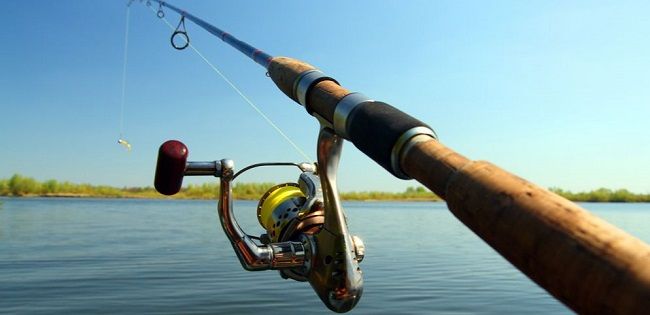
The main fishing gear on the Kuban River are:
- Spinning.
- Float rod.
- Leash.
- Feeder.
When going fishing, you should take care of spare equipment, because there are often snags here. Having hooked the tackle, from time to time it is quite difficult to unhook it, so you have to break it off. Therefore, having spare leashes with hooks is a must.
